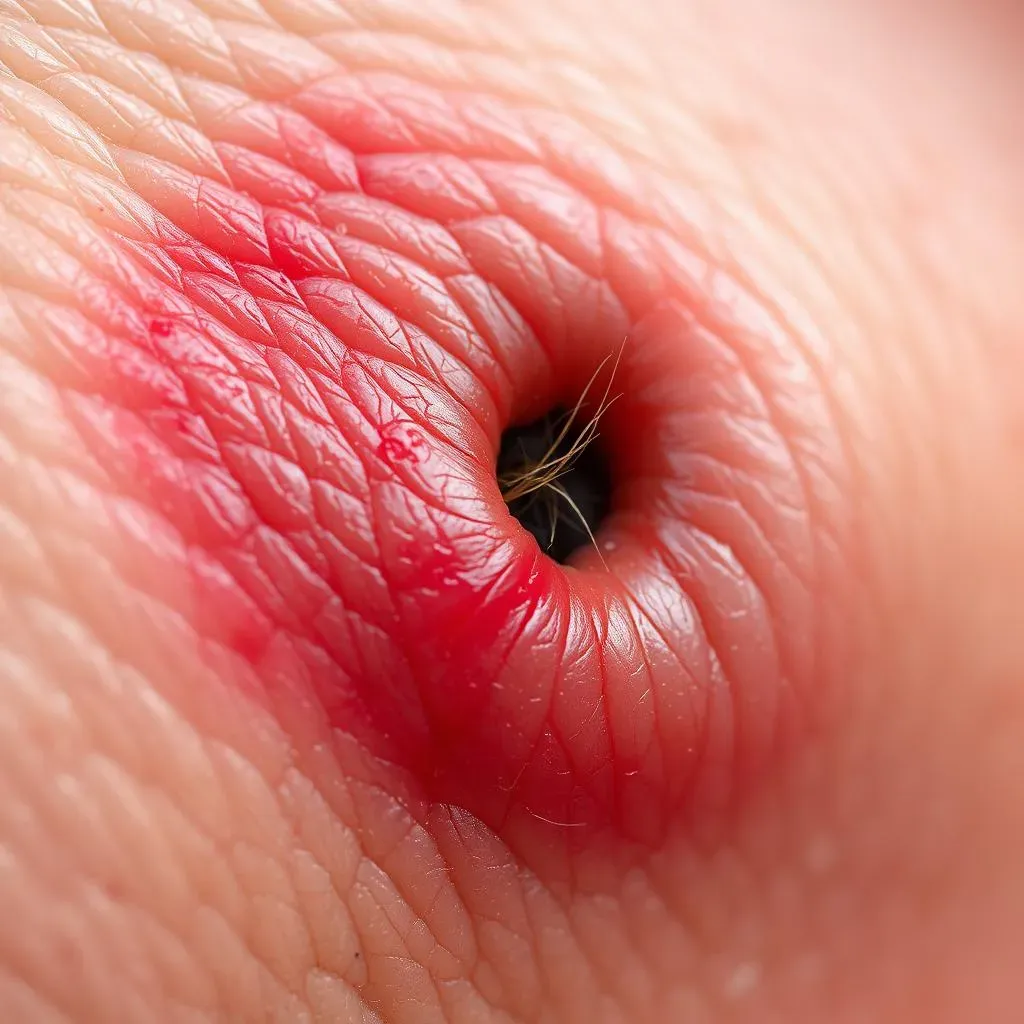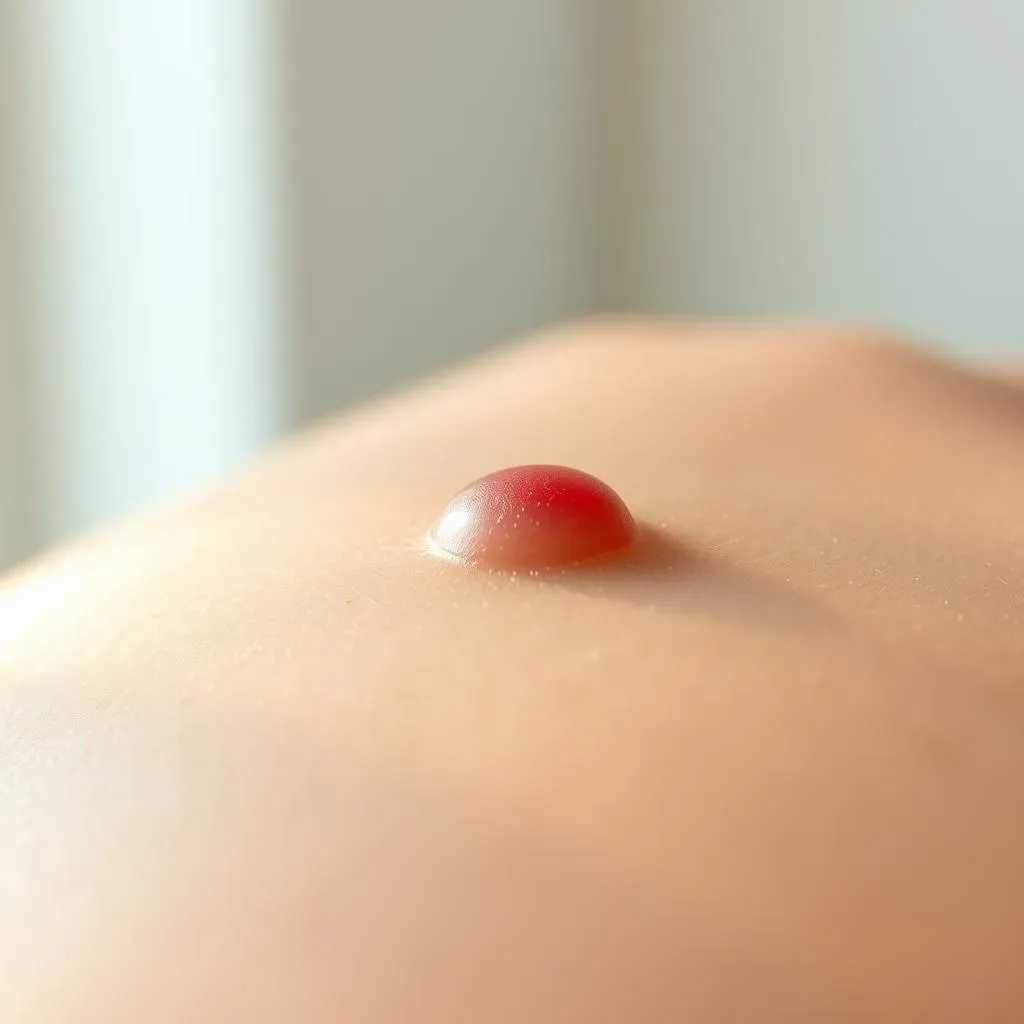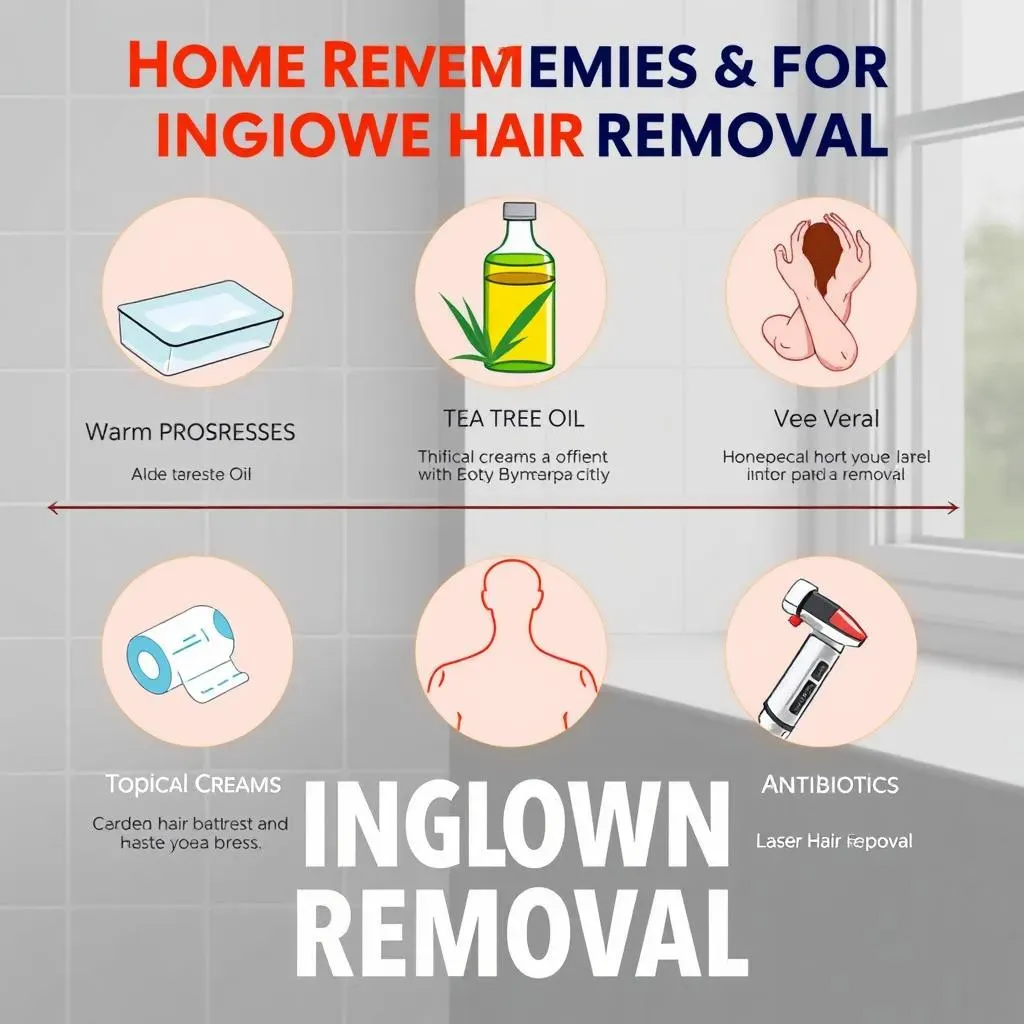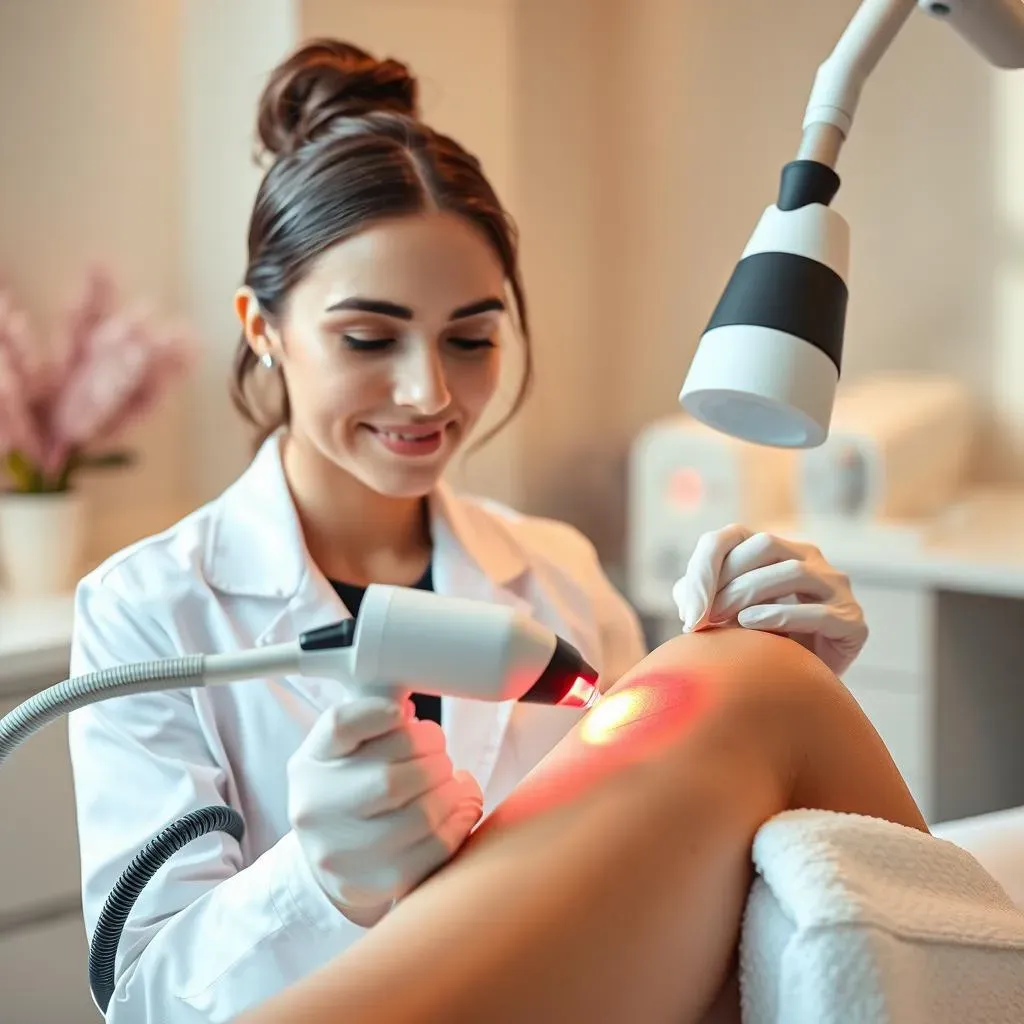Table of Contents
Ingrown hairs can be a frustrating and painful problem for many individuals, especially when it comes to long ingrown hair removal. These occur when hair grows back into the skin, leading to inflammation, redness, and discomfort. Long ingrown hair removal can be challenging, but there are several methods and techniques that can help alleviate this issue. In this article, we will delve into the world of ingrown hairs, exploring their causes, symptoms, and diagnosis. We will also discuss various treatment options, including home remedies, medical interventions, and advanced solutions like laser hair removal. Additionally, we will provide tips on how to prevent ingrown hairs from forming in the first place. Whether you're looking for ways to remove existing ingrown hairs or prevent new ones from forming, this article aims to provide you with a comprehensive guide to long ingrown hair removal. By the end of this article, you will be equipped with the knowledge and tools necessary to tackle ingrown hairs and achieve smooth, healthy-looking skin.
Understanding Ingrown Hair and Its Causes: How to Identify Long Ingrown Hair

Understanding Ingrown Hair and Its Causes: How to Identify Long Ingrown Hair
What are Ingrown Hairs?
Ingrown hairs occur when a hair grows back into the skin, rather than outward, causing inflammation, redness, and discomfort. This can happen anywhere on the body where hair is removed, such as the bikini line, underarms, legs, and face. Ingrown hairs are more common in individuals with curly or coarse hair, as the curved hair follicle can cause the hair to grow back into the skin. Additionally, people with darker skin tones are more prone to ingrown hairs due to the curved shape of their hair follicles.
Long ingrown hair removal can be particularly challenging, as the hair may be deeply embedded in the skin, making it difficult to remove. It's essential to understand the causes of ingrown hairs to prevent them from occurring in the first place. Causes include:
- Improper shaving techniques, such as shaving too closely or against the grain
- Tight clothing that rubs against the skin, causing friction and irritation
- Dead skin cells clogging the hair follicle, trapping the hair
- Genetic predisposition, as some people are more prone to ingrown hairs due to their hair texture and skin type
Symptoms and Diagnosis of Ingrown Hairs
Ingrown hairs can appear as small, raised bumps on the skin, often accompanied by redness, swelling, and itching. In severe cases, they can become infected, leading to pus-filled cysts or abscesses. If left untreated, ingrown hairs can lead to scarring, hyperpigmentation, and permanent damage to the skin.
To diagnose ingrown hairs, a healthcare professional will typically perform a physical examination and ask questions about your skin and hair care routine. They may also prescribe topical creams or antibiotics to treat any underlying infections. In some cases, they may use a sterile needle or scalpel to remove the ingrown hair.
Symptom | Description |
|---|---|
Redness and inflammation | The affected area becomes red, swollen, and tender to the touch |
Pus or discharge | Pus-filled bumps or discharge indicate infection |
Itching and pain | The area may itch, burn, or feel painful to the touch |
Symptoms and Diagnosis of Ingrown Hair: What to Look Out for in Long Ingrown Hair Removal

Symptoms and Diagnosis of Ingrown Hair: What to Look Out for in Long Ingrown Hair Removal
Identifying Ingrown Hairs: What to Look For
Ingrown hairs can manifest in different ways, but they often appear as small, raised bumps on the skin. These bumps may be red, swollen, and tender to the touch. In some cases, ingrown hairs can become infected, leading to pus-filled cysts or abscesses. It's essential to recognize the symptoms of ingrown hairs to seek proper treatment and prevent further complications.
Some common signs of ingrown hairs include redness, inflammation, itching, and pain. If you notice any of these symptoms, it's crucial to take action to prevent the ingrown hair from becoming infected. You can start by applying warm compresses to the affected area to reduce swelling and promote healing.
Symptom | Description |
|---|---|
Redness and inflammation | The affected area becomes red, swollen, and tender to the touch |
Pus or discharge | Pus-filled bumps or discharge indicate infection |
Itching and pain | The area may itch, burn, or feel painful to the touch |
Diagnosing Ingrown Hairs: A Healthcare Professional's Role
A healthcare professional can diagnose ingrown hairs through a physical examination and by asking questions about your skin and hair care routine. They may also prescribe topical creams or antibiotics to treat any underlying infections. In some cases, they may use a sterile needle or scalpel to remove the ingrown hair.
It's essential to seek medical attention if you experience severe symptoms, such as increased redness, swelling, or pus. Untreated ingrown hairs can lead to scarring, hyperpigmentation, and permanent damage to the skin. A healthcare professional can provide guidance on the best course of treatment and help you develop a plan to prevent future ingrown hairs.
- Keep the affected area clean and dry
- Apply topical creams or ointments as prescribed
- Avoid picking or scratching the ingrown hair
- Consider alternative hair removal methods, such as waxing or sugaring
Treatment Options for Ingrown Hairs
While some ingrown hairs may resolve on their own, others may require medical attention. Treatment options vary depending on the severity of the ingrown hair. For mild cases, warm compresses and topical creams may be sufficient. For more severe cases, antibiotics or minor surgical procedures may be necessary.
In addition to medical treatments, there are several home remedies that can help alleviate symptoms and promote healing. These include applying tea tree oil, aloe vera, or coconut oil to the affected area. It's also essential to practice good hygiene and avoid tight clothing that may irritate the skin.
Treatment Options for Long Ingrown Hair Removal: From Home Remedies to Medical Interventions

Treatment Options for Long Ingrown Hair Removal: From Home Remedies to Medical Interventions
Home Remedies for Ingrown Hair Removal
For mild cases of ingrown hairs, home remedies can be an effective way to alleviate symptoms and promote healing. One of the most popular home remedies is applying warm compresses to the affected area. Soaking the skin in warm water can help to soften the hair and reduce inflammation. Another remedy is using tea tree oil, which has antibacterial properties that can help to prevent infection. Aloe vera gel or coconut oil can also be applied to the affected area to reduce redness and promote healing.
In addition to these remedies, it's essential to practice good hygiene and avoid picking or scratching the ingrown hair. This can lead to further irritation, infection, and scarring. Instead, consider using a gentle exfoliating scrub to remove dead skin cells and help the hair grow out of the skin. By combining these home remedies with proper skin care, you can help to resolve ingrown hairs and prevent new ones from forming.
Remedy | Description | Benefits |
|---|---|---|
Warm compresses | Apply warm water to the affected area for 10-15 minutes | Softens hair, reduces inflammation |
Tea tree oil | Apply a few drops to the affected area | Antibacterial properties, prevents infection |
Aloe vera gel or coconut oil | Apply topically to reduce inflammation | Soothes skin, promotes healing |
Medical Interventions for Ingrown Hair Removal
For more severe cases of ingrown hairs, medical interventions may be necessary. A healthcare professional may prescribe topical creams or antibiotics to treat infection and reduce inflammation. In some cases, they may use a sterile needle or scalpel to remove the ingrown hair. This should only be done by a medical professional, as improper removal can lead to further complications.
Additionally, for individuals who experience frequent or severe ingrown hairs, alternative hair removal methods may be recommended. Laser hair removal, for example, can provide a long-term solution by reducing hair growth and preventing ingrown hairs from forming. Other options include electrolysis, waxing, or sugaring, which can be less irritating than shaving. By exploring these medical interventions and alternative hair removal methods, you can find a solution that works best for your skin and hair type.
- Topical creams: Reduce inflammation and prevent infection
- Antibiotics: Treat underlying infections
- Sterile removal: Remove ingrown hair with a needle or scalpel
- Laser hair removal: Reduce hair growth and prevent ingrown hairs
- Electrolysis, waxing, or sugaring: Alternative hair removal methods
Prevention Strategies for Ingrown Hair: Tips for Avoiding Long Ingrown Hair

Prevention Strategies for Ingrown Hair: Tips for Avoiding Long Ingrown Hair
Understanding Your Skin and Hair Type
Preventing ingrown hairs starts with understanding your skin and hair type. If you have curly or coarse hair, you're more prone to ingrown hairs. Similarly, individuals with darker skin tones are more likely to experience ingrown hairs due to the curved shape of their hair follicles. Knowing your skin and hair type can help you adopt the right strategies to prevent ingrown hairs.
One of the most effective ways to prevent ingrown hairs is to practice proper shaving techniques. This includes shaving in the direction of hair growth, using a sharp razor, and avoiding shaving too closely. Additionally, exfoliating your skin regularly can help remove dead skin cells and prevent them from clogging the hair follicle.
Prevention Tip | Description | Benefits |
|---|---|---|
Shave in the direction of hair growth | Avoid shaving against the grain to prevent hair from becoming trapped | Reduces risk of ingrown hairs |
Use a sharp razor | A dull razor can cause hair to break and lead to ingrown hairs | Minimizes hair breakage |
Exfoliate regularly | Remove dead skin cells to prevent clogged follicles | Promotes healthy skin and hair growth |
Clothing and Lifestyle Changes
Tight clothing can rub against the skin, causing friction and irritation, which can lead to ingrown hairs. Wearing loose, breathable clothing can help reduce this friction and prevent ingrown hairs. Additionally, maintaining a healthy lifestyle, including a balanced diet and regular exercise, can help improve skin health and reduce the risk of ingrown hairs.
It's also essential to avoid picking or scratching ingrown hairs, as this can lead to further irritation, infection, and scarring. Instead, consider using alternative hair removal methods, such as waxing or sugaring, which can be less irritating than shaving. By combining these prevention strategies, you can significantly reduce the risk of developing ingrown hairs and maintain healthy, smooth skin.
- Wear loose, breathable clothing to reduce friction
- Maintain a healthy diet and exercise regularly
- Avoid picking or scratching ingrown hairs
- Consider alternative hair removal methods
Advanced Solutions for Ingrown Hair Removal: Laser Hair Removal and Other Professional Treatments

Advanced Solutions for Ingrown Hair Removal: Laser Hair Removal and Other Professional Treatments
What is Laser Hair Removal?
Laser hair removal is a popular and effective solution for ingrown hair removal, especially for individuals with thick or curly hair. This advanced treatment uses a laser to target and destroy hair follicles, reducing hair growth and preventing ingrown hairs from forming. Laser hair removal is a long-term solution that can provide smooth, hair-free skin for extended periods.
The process involves a series of sessions, typically 3-6, spaced 4-6 weeks apart. During each session, a laser is applied to the affected area, emitting a beam of light that targets the hair follicle. The heat from the laser damages the follicle, preventing future hair growth. While laser hair removal is not permanent, it can significantly reduce hair growth, making it an ideal solution for those prone to ingrown hairs.
Benefits | Description | Results |
|---|---|---|
Reduces hair growth | Targets and destroys hair follicles | Smooth, hair-free skin |
Minimizes ingrown hairs | Prevents hair from growing back into the skin | Reduced inflammation and irritation |
Long-term solution | Requires multiple sessions | Extended periods of smooth skin |
Other Professional Treatments for Ingrown Hair Removal
In addition to laser hair removal, there are other professional treatments available for ingrown hair removal. Electrolysis is a method that uses a fine needle to destroy hair follicles with an electric current. This treatment is more time-consuming than laser hair removal but can be effective for smaller areas. Waxing and sugaring are also popular alternatives to shaving, as they remove hair from the root, reducing the risk of ingrown hairs.
Another option is intense pulsed light (IPL) therapy, which uses broad-spectrum light to target hair follicles. IPL is less effective than laser hair removal but can still provide significant results. It's essential to consult with a professional to determine the best treatment for your skin and hair type. By exploring these advanced solutions, you can find a long-term answer to ingrown hairs and enjoy smooth, healthy-looking skin.
- Electrolysis: Destroys hair follicles with electric current
- Waxing and sugaring: Removes hair from the root, reducing ingrown hairs
- Intense pulsed light (IPL) therapy: Targets hair follicles with broad-spectrum light
Conclusion: Taking Control of Ingrown Hairs with Professional Treatments
Ingrown hairs can be a frustrating and painful issue, but there are many effective solutions available. From home remedies to medical interventions and advanced professional treatments, there's a method to suit every individual's needs. Laser hair removal, electrolysis, waxing, sugaring, and IPL therapy are just a few of the options that can provide long-term results and prevent ingrown hairs from forming.
By understanding the causes of ingrown hairs and exploring the various treatment options, you can take control of your skin and hair health. Whether you're looking for a quick fix or a long-term solution, there's a method out there for you. Remember to always prioritize your skin health and seek professional advice if you're unsure about the best course of treatment. With the right approach, you can say goodbye to ingrown hairs and hello to smooth, radiant skin.
Conclusion: Achieving Smooth Skin with Effective Long Ingrown Hair Removal
Long ingrown hair removal requires patience, persistence, and the right approach. By understanding the causes of ingrown hairs and implementing preventive measures, individuals can reduce their occurrence. For existing ingrown hairs, various treatment options are available, ranging from home remedies to medical interventions and advanced solutions like laser hair removal. At hairawaybylaser.com, our expert team can help you achieve smooth, healthy-looking skin through professional laser hair removal. Remember, taking care of your skin and using proper hair removal techniques are key to preventing ingrown hairs and maintaining healthy skin. With the right strategies and treatments, you can say goodbye to the discomfort and embarrassment of ingrown hairs and hello to confident, radiant skin. Whether you choose to tackle ingrown hairs at home or seek professional help, effective long ingrown hair removal is within reach.
